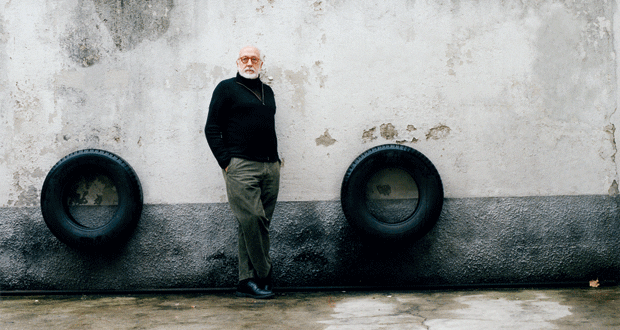
words Justin McGuirk
Andrea Branzi doesn’t like architecture. Icon met the designer, writer and co-founder of 1960s radical group Archizoom at his Milan studio to ask him why.
In your recent work you’ve been developing a language of abstract architecture. What do you mean by “abstract”?
Painting and music have become abstract, all of modern culture tends towards what we call abstraction, that is, atomisation, molecular systems. Yet architecture continues to represent itself. The work of, for example, Zaha Hadid, Frank Gehry, Daniel Libeskind is figurative architecture. But you see, the contemporary city is an abstract territory, a fluid system composed of information and merchandise. That is the city, not the buildings. So, architecture is ever more a territory and less and less a construction. My works are theoretical, they are not meant to be built.
So you think architecture is in crisis?
Architecture has lost its role in the city – it is not a significant cultural actor. The city is no longer constructed by architecture, it’s a place made up of shoes, clothes, sunglasses! Indeed, the only architecture that in some way manages to play a role in the contemporary city is architecture that succeeds in creating a visible exception – that follows the logic of being something to look at, as opposed to somewhere to inhabit. There is a conflict between the city and architecture.
Is this a criticism of iconic architecture or architecture in general?
It is an observation of the limitation of architecture, which is that architecture survives in the city but is indifferent to it.
So what do architects do now, in your opinion?
That’s like asking what artists do. Architects do what they can do, what they know how to do. But I’m not suggesting they change job. We have to begin to think of another way, another world, another historical phase in architecture.
Is there anyone you feel is doing that successfully?
Little by little, they all will. I’m not so much trying to change architecture as to change architects. Until architects change, architecture remains the same. Just to be clear, I’m a friend of architects but I don’t like architecture. Oh well.
What you think about the Milan furniture fair? Does it interest you?
At the moment in Milan there are 500 exhibitions, outside the fair… so it isn’t about seeing the 500 exhibitions, because it isn’t possible to do. But they create a new kind of city that is forever changing. Ninety per cent of the products presented are not intended for production but create a kind of “semiosphere” that is constantly evolving. It expresses a diffuse, public creativity that is trying to change the world through small things.
A lot of what you see in Milan is not that experimental, it’s just changing the colour or shape of something. It seems to reflect more of the market than the avant-garde.
Changing the colour, in any case, is innovation. Let us recall that this is the century of micro-credit, of [Bangladeshi economist] Muhammad Yunus, who by lending one dollar at a time has changed the lives of 170 million people. It’s the same phenomenon in the furniture business where 500 exhibitions are the result of thousands of people designing without any relation to industry, expressing their own creativity, their own critique of the world today. In the last century, we thought only mega projects, great plans, worked, and that ended in major disasters.
Italy has thousands of design students, but we’re not seeing many good young designers.
Not yet. But that’s not a problem.
image Guy Drayton


















